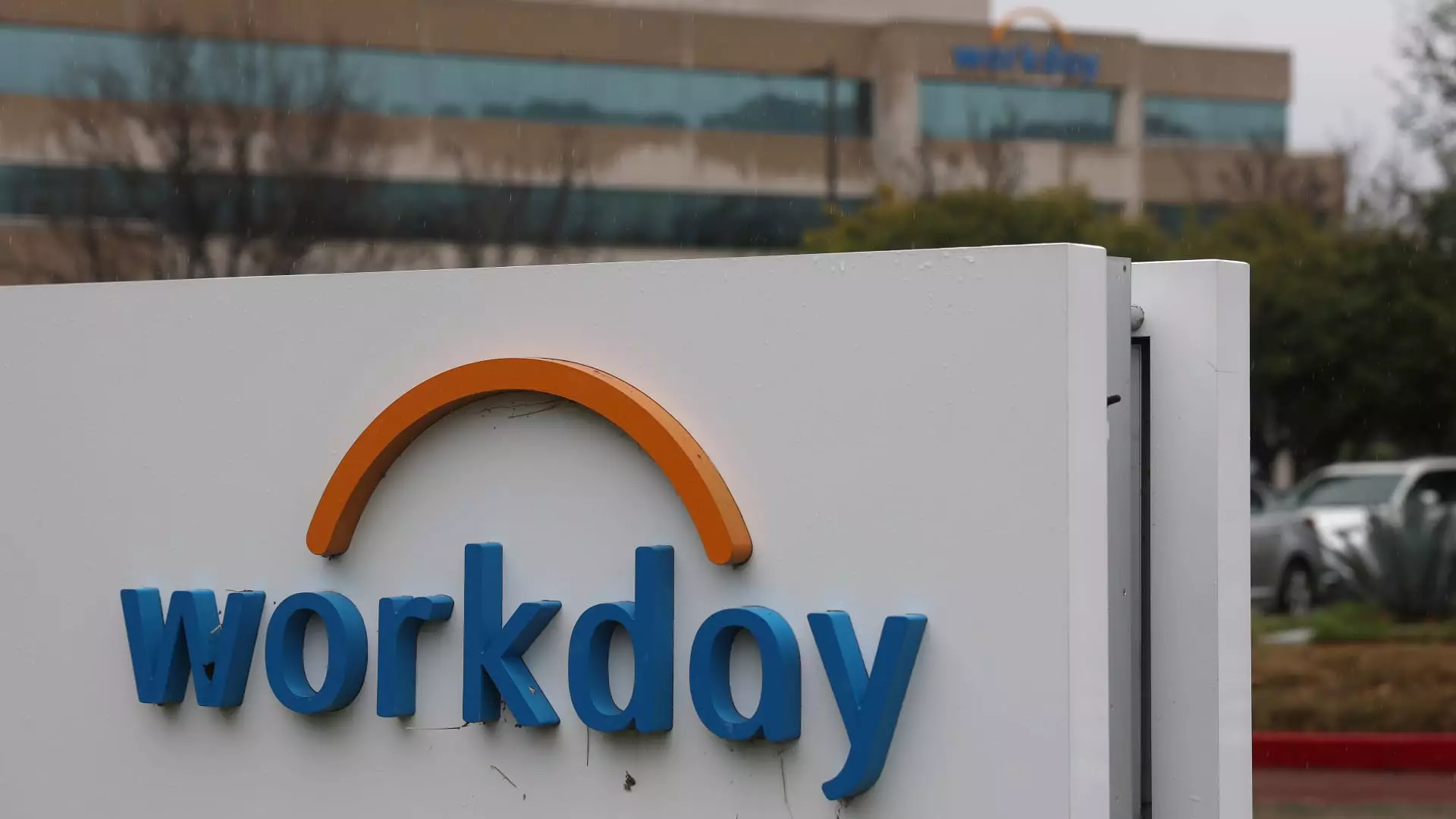In the realm of enterprise software, Workday has long been a formidable contender, boasting a client roster that includes over 11,000 organizations worldwide and a dominant presence within Fortune 500 companies. Its cloud-based solutions for human capital management (HCM) and financial management have cemented its reputation, with a robust 98% customer retention rate and consistent mid-teens revenue growth. However, looks can deceive. Behind the impressive numbers lurks a stark reality: despite its dominant market share, Workday has underperformed relative to its peers significantly over recent years, dragging its valuation down and raising questions about its growth sustainability.
This disparity is a byproduct of a growth-at-all-costs mentality that fueled its rise from modest beginnings to a $58 billion enterprise. While impressive, this strategy has now run into the law of large numbers. Maintaining hyper-growth becomes exponentially more challenging as revenues expand. The company’s historic focus on rapid expansion has left it with a lukewarm profit profile, leading investors to grow increasingly impatient. Simply put, size and market dominance do not automatically translate into shareholder value if profitability and strategic clarity are left in the shadows.
Furthermore, Workday’s share price has lagged peer companies like ServiceNow, SAP, and Salesforce, underperforming by significant margins over the past 1, 3, and 5 years. This gap reveals a fundamental misalignment between market expectations for growth and what Workday delivers. The company’s lack of profitability, combined with sluggish valuation growth, reflects investor skepticism about its future ability to innovate or expand profit margins—particularly as it approaches the natural growth ceiling of its expansive client base.
A Transformative Leadership Change: A Strategic Need
The appointment of Carl Eschenbach as CEO signifies a meaningful pivot from founder-led growth to disciplined, value-focused management. For years, Aneel Bhusri, the visionary co-founder and architect of Workday’s early success, was at the helm. His leadership propelled the company from nothing to a $58 billion powerhouse. Yet, leading a high-growth startup with a close-knit team is fundamentally different from steering a mature, publicly traded enterprise—especially one facing the steady headwinds of market saturation and slowing growth.
Eschenbach’s arrival represents more than a change in the title; it embodies a strategic shift necessary to unlock shareholder value. Bhusri’s accomplishments are undeniable, but managing the operations of a publicly traded company requires an executive with a different skill set—one focused on efficiency, cost discipline, and sustainable growth. This transition is an acknowledgment that the era of unchecked expansion has reached its limits, and the time to pivot towards profitability and shareholder returns has arrived.
The new leadership also signals a blue chip endorsement from a seasoned veteran who understands enterprise transformation, operational excellence, and disciplined capital allocation. Eschenbach brings a reputation for turning around complex organizations, and his appointment likely signals a blueprint for how Workday will navigate its next growth chapter—focused not just on revenue, but on margins, cash flow, and strategic M&A.
Capital Deployment and Strategic Initiatives: A Calculated Play for Value
The recent multiyear plans announced by Workday clarify its new operational mindset. A $5 billion share repurchase program, coupled with a target of $15 per share free cash flow by 2028, paints a picture of a company actively committed to returning value to shareholders. These measures are more than mere window dressing; they represent an acknowledgment that capital deployment—whether through buybacks or strategic acquisitions—can reset market perceptions and improve financial metrics.
Additionally, Workday’s substantial cash reserves—over $8 billion in net cash—provide the firepower necessary to pursue opportunistic acquisitions or to fund aggressive buyback initiatives without compromising financial stability. The company’s recent acquisitions of Sana, Paradox, and Flowise indicate that AI and process automation are areas where Workday sees significant value creation potential. With AI generating $150 million in new revenue last year, a 200% increase, the company is clearly positioning itself to leverage technological advances for competitive advantage.
In this context, AI is not just an add-on but a core strategic driver. Automating HR workflows and financial processes promises efficiency gains that could further increase customer stickiness and deepen its competitive moat. This foresight—combined with a willingness to invest in transformative technology—is essential for a company that needs to evolve from growth at all costs to growth with discipline.
Ownership Structure and Market Perception
One challenge for Workday remains its founder-controlled structure, with Bhusri controlling over 70% of voting power through Class B shares. From a governance perspective, this concentrated ownership often invites market skepticism, as investors question whether management will prioritize short-term shareholder returns or maintain founder-centric objectives.
However, recent developments—namely, Eschenbach’s appointment and the support from Elliott—signal a tentative shift towards more balanced governance. Elliott’s multibillion-dollar investment does not merely reflect confidence; it underscores a desire for strategic discipline and shareholder alignment. Such active engagement by an influential activist investor suggests that the company’s future direction involves more than just growth; it demands profitability, transparency, and governance reforms.
The relationship between Elliott, Eschenbach, and the board could serve as a catalyst for elevating Workday’s management practices to better meet investor expectations. This new alignment might also assuage lingering concerns about founder control, making the stock more attractive to a broader pool of institutional investors.
—
While Workday’s impressive client base and recurring revenue model underscore its potential, it’s the company’s capacity to adapt strategically that will determine whether it can transition from a growth story to a value generator. With a new CEO guiding its course, a focus on disciplined capital management, and strategic AI investments, Workday stands at a critical crossroads. Its future success hinges on whether it can turn its size into advantage without falling prey to complacency or missed opportunities. The next five years will be decisive—either the period when Workday consolidates its legacy as an industry leader through innovation and efficiency or the era when it merely treads water amid more agile competitors.

